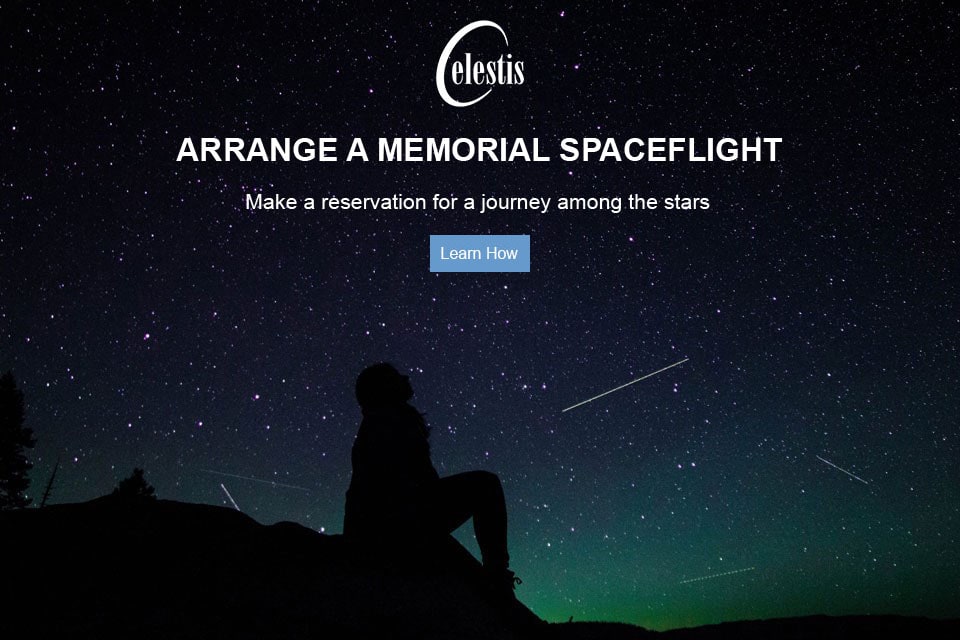How NASA Paved the Way for Memorial Spaceflights
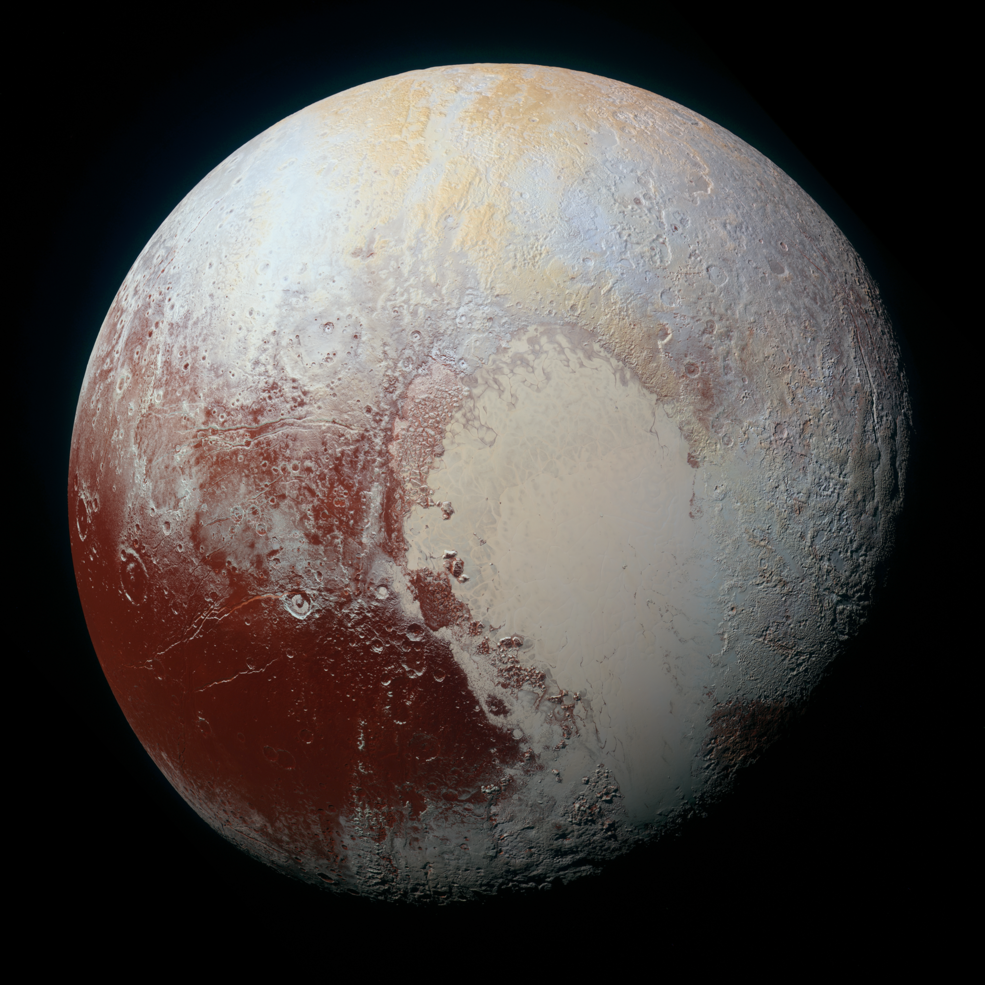
Enhanced color global view of Pluto, taken when NASA’s New Horizons spacecraft was 280,000 miles (450,000 kilometers) away. Credits: NASA/JHUAPL/SwRI
While Celestis is the industry’s iconic leader in memorial spaceflights, another entity has also sent ashes into space, including deep space: NASA, the United States’ space agency. NASA even worked with Celestis to ensure a spaceflight legend’s ashes were carried upon a Moon-bound mission. This article will discuss how NASA, in many ways, paved the way for memorial spaceflights, starting with a 1992 Space Shuttle flight that orbited the Earth.
STS-52 Columbia, October 1992
On October 22, 1992, Space Shuttle mission STS-52 Columbia launched into low Earth orbit, carrying an array of payloads and life sciences experiments to investigate how the human body adapted to spaceflight. However, mission commander James B. Weatherbee carried another “payload” onboard Columbia: a portion of Star Trek® creator Gene Roddenberry’s ashes in his personal preferences kit (PPK). Roddenberry’s widow, Majel Barrett Roddenberry, had asked NASA Administrator Dan Goldin to help her fulfill her husband’s lifelong desire to travel in space. Goldin approved an “unofficial” flight, allowing Weatherbee to use his travel kit to carry Roddenberry’s ashes.
This NASA mission paved the way for future memorial spaceflights. According to a previously published Celestis article written by the company’s co-founder and CEO Charles M. Chafer, he reached out to his friend Lori Garver, the future NASA Deputy Administrator, seeking an introduction to Majel. Garver was then the Executive Director of the National Space Society, and Majel was on its Board of Advisors:
Majel expressed an interest in listening to our offer after checking out the status of startup Celestis, Inc. with her friend Bobbie Slayton – wife of legendary “Right Stuff” astronaut Donald K. “Deke” Slayton. Deke was my boss at Space Services Inc. of America when the Celestis concept first was introduced in the 1980s and always believed in the memorial spaceflight business. Deke passed in 1993, and Bobbie was very supportive in the early years of Celestis.
Majel agreed to take a phone call, and agreed to place a portion of Gene’s ashes aboard the Founders Flight. She had only one condition – that in the future at the appropriate time, we would agree to fly Gene and her together on one of our Voyager deep space missions. She wanted to spend eternity traveling through space with Gene.
Gene Roddenberry was one of the 24 brave souls aboard April 1997’s Founders Flight, alongside other luminaries such as space settlement pioneer Dr. Gerard K. O’Neill, rocket scientist Dr. Krafft Ehricke, and 1960s counterculture figure Timothy Leary. But the idea to have Roddenberry aboard the Founders Flight can be traced back to NASA’s STS-52 mission aboard Columbia.
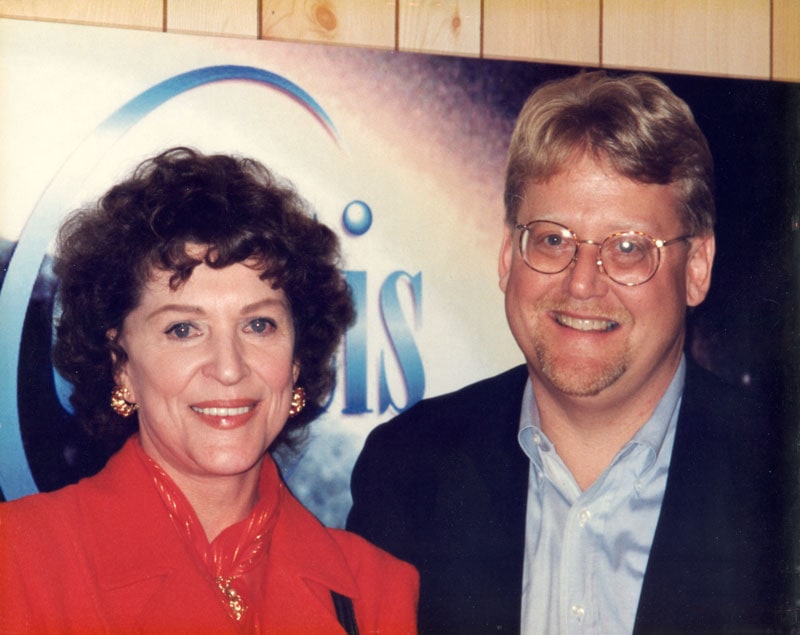
Majel Barrett Roddenberry with Celestis' CEO Charles M. Chafer. Photo credit: Celestis
Celestis’ upcoming Enterprise Flight will fulfill Majel’s dream of flying in space with her beloved Gene; in addition, the DNA of their son, Rod, will fly with his parents’ ashes in a deep space solar orbit. In many ways, the Enterprise Flight will be the ultimate Star Trek® reunion, as it will also carry the ashes of Nichelle Nichols (the series’ “Lt. Uhura”) and the DNA of DeForest Kelley (“Dr. McCoy”).
The Luna 01 Flight: NASA’s Lunar Prospector Mission and A Dream Fulfilled
Scientist Dr. Eugene Shoemaker was a superstar in planetary geology and science. Many recognize his name from the comet Shoemaker-Levy 9, which was observed impacting gas giant Jupiter in 1994. But his expertise on the Earth’s Moon enabled him to train NASA’s Apollo astronauts for their legendary missions. Shoemaker himself hoped to be able to walk on the Moon, but due to a medical issue, he did not get his chance to strap into a Saturn V rocket and “hop” around in diminished gravity as hoped. According to a tribute website, as recent as two years before his passing, he lamented, “Not going to the Moon and banging on it with my own hammer has been the biggest disappointment in life.”
In 1997, Shoemaker died in a car accident while investigating craters in Australia. His death was a tremendous loss to the field; when NASA was gearing up to launch its third Discovery Program mission, Shoemaker’s colleague Dr. Carolyn Porco and the space agency wanted to give Shoemaker the ultimate tribute – and fulfill a dream. Porco enthused, “It was legend in the planetary science community that Gene had always wanted to go to the Moon as an Apollo astronaut… I felt this was Gene’s last chance, and that it would be a fitting and beautiful tribute.”
By this point in Celestis’ history, the company had just launched the Founders Flight, proving that memorial spaceflights could be successfully undertaken. NASA called upon Celestis to make Shoemaker’s dream of going to the Moon a reality aboard the Lunar Prospector spacecraft. In an Atlas Obscura article, Chafer remembered, “I got a phone call. A good friend of mine was the chief of staff and legislative liaison for NASA, Ed Heffernan.” The article reported, “Heffernan asked Chafer if Celestis could work with them to find a way to get some of Shoemaker’s remains to the Moon’s surface, because NASA wasn’t really in the business of burying people.”
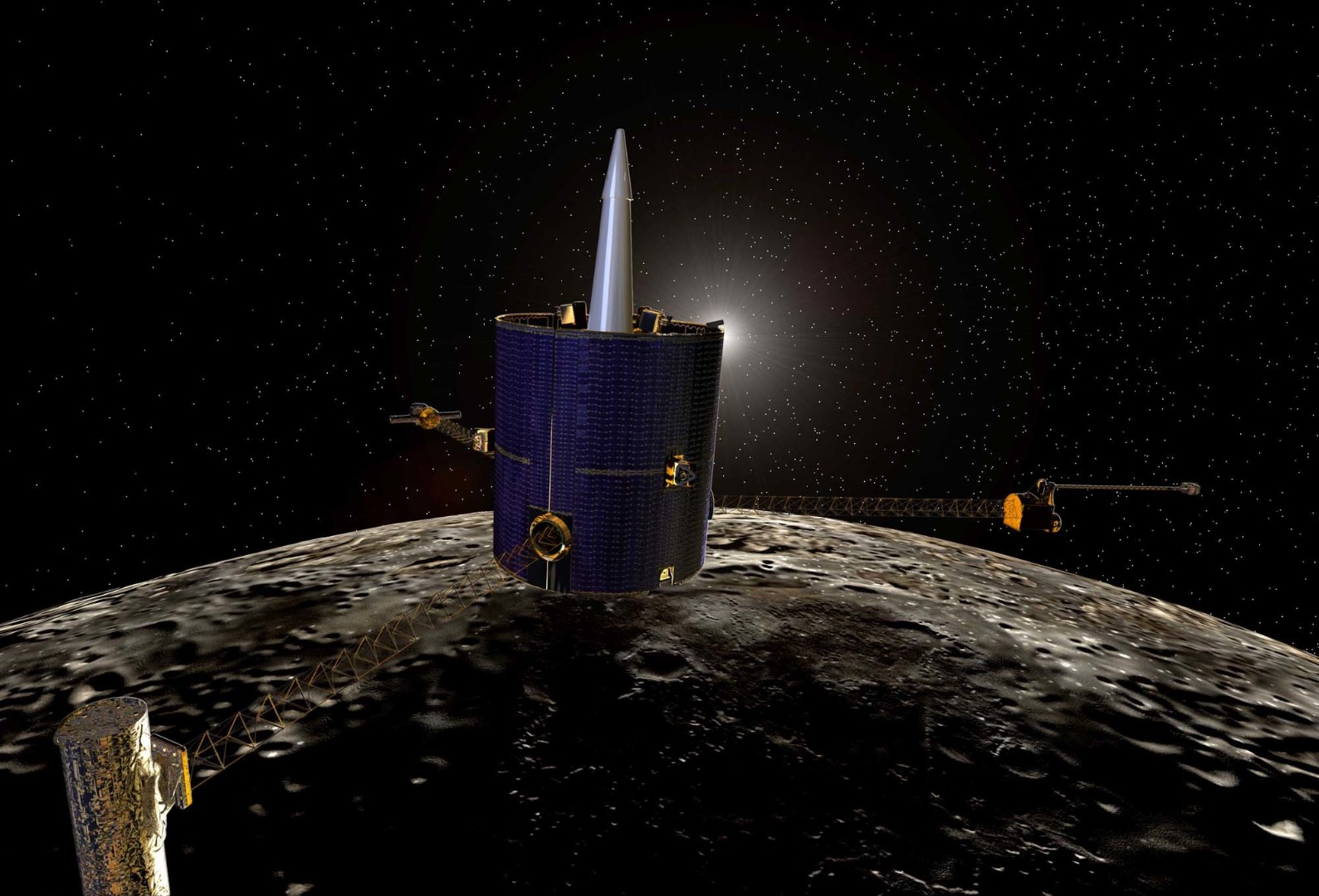
An artist's concept of the Lunar Prospector spacecraft just before impact on Moon. Credit: NASA/Ames
On January 6th, 1998, Lunar Prospector – Celestis’ Luna 01 Flight – was launched from Florida’s Cape Canaveral Air Force Station aboard a Lockheed Martin Athena II rocket; Shoemaker’s ashes were encased in a small polycarbonate capsule wrapped in brass foil, inscribed with a composite image that commemorated his life, career, and legacy. A year and a half later, on July 31st, 1999, Lunar Prospector was impacted in the crater named after Shoemaker near the Moon’s Southern pole. This wrapped up a wildly successful, cost-effective scientific mission that uncovered evidence suggesting water ice may exist at the Moon’s poles. To this day, Shoemaker is the only person “buried” on the Moon. Celestis also became the first entity to place a private payload on the lunar surface.
However, Celestis’ Luna 01 flight set a precedent for future Moon burials. The company’s upcoming second Luna Service, the Tranquility Flight, will launch aboard Astrobotic’s Peregrine Lunar Lander, which will land in the Lacus Mortis basaltic region in the Moon’s northeastern quadrant. The brave passengers aboard the Tranquility Flight will join Shoemaker to become the first humans laid to rest on the lunar surface.
Clyde Tombaugh and New Horizons
During the late 1920s, young astronomer Clyde Tombaugh resumed the hunt for “Planet X,” a quest begun by astronomer Percival Lowell, who suspected another world might exist outside Neptune’s orbit. In 1930, 24-year-old Tombaugh found “Planet X” – Pluto, the dwarf planet. His discovery not only revealed a new world but illuminated the Solar System’s “third zone” – a region that we now know contains Kuiper Belt Objects (KBOs). It was only fitting that Tombaugh, who died in 1997, became a part of one of the most ambitious deep space missions of all time.
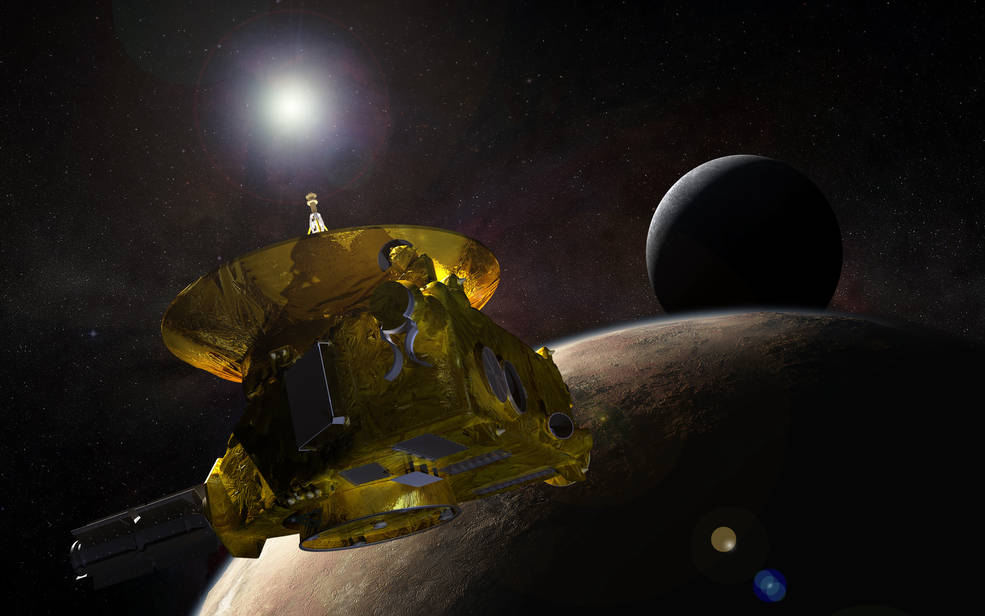
Artist's concept of New Horizon's Pluto flyby. Image retrieved from NASA.
In 1989, the Voyager 2 spacecraft completed a Neptune flyby, but no clear images of Pluto or Kuiper Belt Objects were ever captured by any spacecraft or telescope. In January 2006, the New Horizons spacecraft was launched by an Atlas V 551 rocket from Cape Canaveral Air Force Station, beginning a very long journey to the outer Solar System. Tombaugh’s ashes were carried aboard the spacecraft in a small container, a fitting tribute to the man who discovered New Horizon’s first target: Pluto. After a nine-year trek, New Horizons revealed Pluto and its moon, Charon, in high-resolution images after its July 14th, 2015, flyby. Humans could view Pluto and Charon in startling clarity for the first time in history.
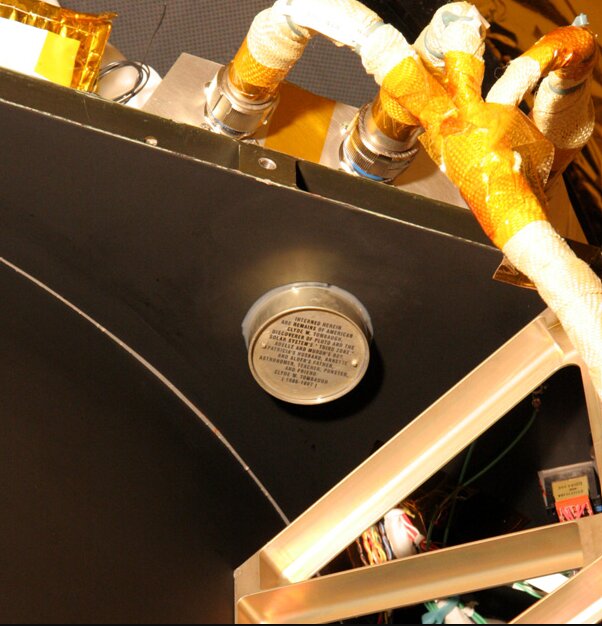
The New Horizons spacecraft carries a small container of Clyde Tombaugh's ashes on its inside upper deck. An inscription on it, written by mission Principal Investigator Alan Stern, reads: "Interred herein are remains of American Clyde W. Tombaugh, discoverer of Pluto and the solar system's 'Third Zone,' Adelle and Muron's boy, Patricia's husband, Annette and Alden's father, astronomer, teacher, punster, and friend: Clyde W. Tombaugh (1906-1997)." Credit: NASA/Johns Hopkins University Applied Physics Laboratory/Southwest Research Institute
On January 1st, 2019, New Horizons imaged 486958 Arrokoth (2014 MU69, or Ultima Thule), a trans-Neptunian, double-lobed Kuiper Belt Object. 486958 Arrokoth remains the most distant target imaged via flyby in spaceflight history. At present, New Horizons continues on its trek, intending to image other deep space Kuiper Belt Objects – carrying the ashes of the astronomer whose initial discovery made these later revelations possible. To quote Dr. Carl Sagan in the television series Cosmos, “When [science] permits us to see the far side of a new horizon, we remember those who paved the way, seeing for them also.”
*****
To travel to deep space, you don’t have to be a superstar scientist, Star Trek® royalty, or a legendary astronomer. You, too, are welcome aboard our upcoming Enterprise Flight.
Celestis’ Enterprise Flight will launch aboard United Launch Alliance’s mighty Vulcan rocket. Following its launch, the vehicle’s Centaur stage will leave Earth’s field of gravity en route to the Peregrine lander’s Trans-Lunar Insertion (TLI) orbit. Once Astrobotic’s Peregrine Lunar Lander has separated from the Centaur upper stage, it will continue its journey to the Moon (and fulfill the Tranquility Flight). Shortly after Peregrine’s separation, the Centaur upper stage carrying the Enterprise Flight crew will be restarted, beginning its journey beyond the Earth-Moon system into the Solar System. Once a stable orbit has been established, the Enterprise Flight will be renamed Enterprise Station, becoming the world’s first outpost of humanity in deep space.
Reservations for flying ashes and DNA aboard the Enterprise Flight are open until Saturday, October 15th. You can also send a unique, personalized message to deep space via our Celestis MindFiles™ service.

